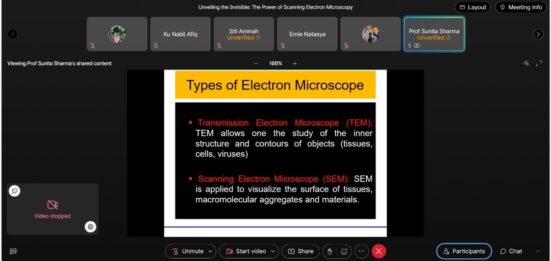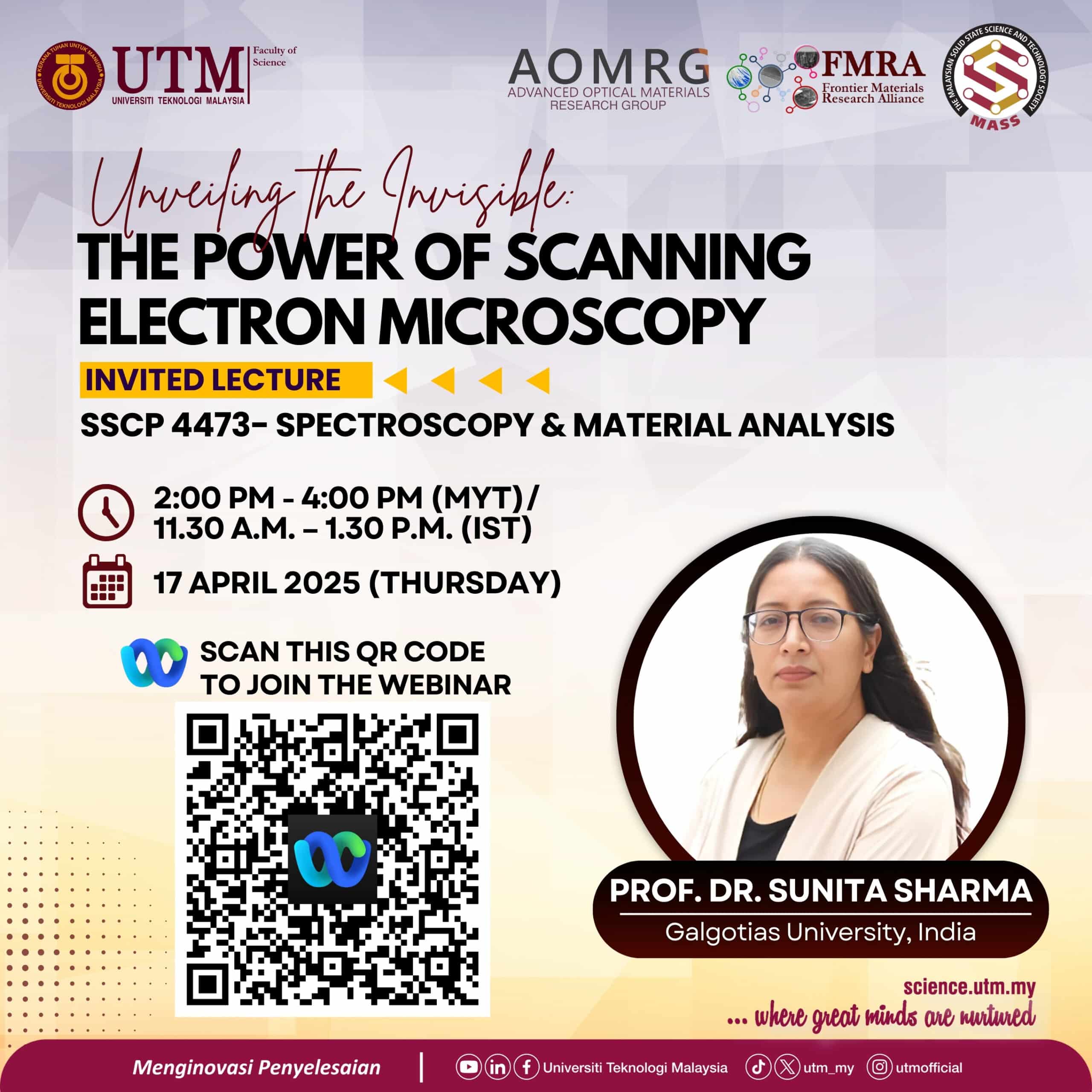JOHOR BAHRU, Apr 17 – The Department of Physics, Faculty of Science, Universiti Teknologi Malaysia (UTM), in collaboration with the Advanced Optical Materials Research Group (AOMRG), the Frontier Materials Research Alliance (FMRA), and the Malaysian Solid State Science and Technology Society (MASS), successfully conducted an international invited lecture titled “Unveiling the Invisible: The Power of Scanning Electron Microscopy”.

The webinar, featuring esteemed guest speaker Prof. Dr. Sunita Sharma from Galgotias University, India, was held virtually as part of the undergraduate course SSCP 4473 – Spectroscopy and Material Analysis.
The session provided an engaging introduction to the advanced imaging capabilities of Scanning Electron Microscopy (SEM), guiding participants through the fundamental physics and practical applications of this powerful technique. Prof. Dr. Sunita Sharma began by explaining how SEM operates using a focused beam of high-energy electrons, rather than light, allowing it to achieve nanometer-scale resolution far beyond the limits of conventional optical microscopes. This is due to the significantly shorter wavelength of electrons, which improves both magnification and depth of focus.

Participants were introduced to key principles such as electron beam-sample interactions, where incident electrons generate a variety of signals—secondary electrons (SE) for surface topography, backscattered electrons (BSE) for compositional contrast, and X-rays for elemental analysis. The importance of sample preparation, particularly for non-conductive or biological materials, was also discussed in detail, including techniques such as sputter coating to ensure electron conductivity.
Prof. Sharma illustrated SEM’s real-world relevance through interdisciplinary applications, including in-situ imaging of materials under high temperatures and forensic investigations. Notable case studies involved energy-dispersive X-ray spectroscopy (SEM-EDS) for identifying multilayered automotive paint chips in hit-and-run incidents and analyzing gunshot residue (GSR) on suspects’ hands and clothing—highlighting SEM’s critical role in both materials science and law enforcement.

The webinar concluded with an interactive Q&A session, allowing participants to explore complex physics concepts such as electron scattering mechanisms, energy-dependent signal generation, the influence of atomic number on image contrast, and the focusing function of electromagnetic lenses. These discussions enriched attendees’ understanding of how SEM integrates particle physics, electromagnetism, and materials characterization into a single tool.
The session also emphasized the importance of vacuum systems and detector configurations, sparking curiosity among students about instrument design. Overall, the lecture successfully bridged theoretical physics with practical insights, leaving participants with a strong appreciation for the scientific depth and versatility of SEM.

The Department of Physics expresses its deepest appreciation to Prof. Dr. Sunita Sharma for her engaging and knowledge-rich session. This webinar reflects UTM’s commitment to promoting global academic exchange and scientific excellence, equipping students with the tools to “see the unseen” in their research endeavors.
By: Dr. Nurhafizah Hasim (AOMRG Leader), Department of Physics, Faculty of Science, UTM
Source: UTM NewsHub
